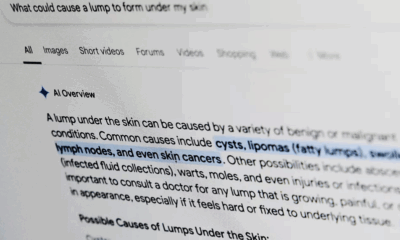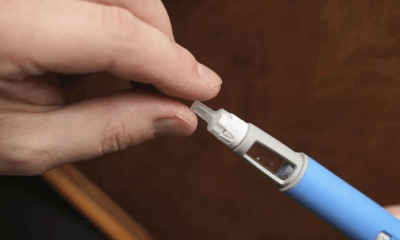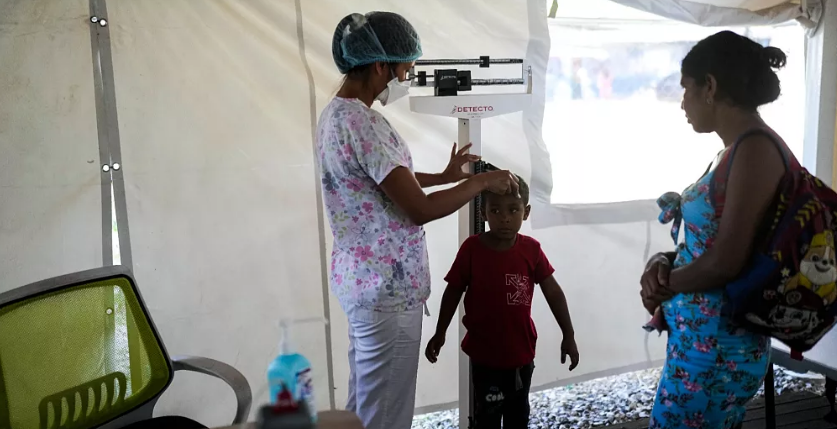Health
India Dominates List of Most Polluted Cities as Global Air Quality Crisis Deepens
A new report has revealed that India is home to six of the world’s nine most polluted cities, highlighting the severity of the country’s air quality crisis. The findings, published by Swiss-based air quality database IQAir, analyzed data from 40,000 monitoring stations across 138 countries, identifying India, Chad, Congo, Bangladesh, and Pakistan as having the dirtiest air globally.
The industrial town of Byrnihat in northeastern India was ranked as the most polluted city worldwide, underlining the impact of rapid industrialization and emissions from factories and vehicles.
A Global Crisis: 83% of Cities Fail Air Quality Standards
The report painted a grim picture of global air pollution, revealing that only 17% of cities worldwide meet air quality guidelines set by the World Health Organization (WHO). Experts warned that actual pollution levels could be even worse, as vast regions, particularly in Africa, lack adequate monitoring infrastructure.
Currently, Africa has only one air quality monitoring station for every 3.7 million people, making it difficult to assess the true extent of pollution. However, progress is being made, with 8,954 new monitoring locations and nearly 1,000 additional sensors deployed in the past year to improve air quality tracking.
Despite these advancements, efforts to monitor pollution suffered a setback last week when the US State Department announced it would stop publicly sharing air quality data from its embassies and consulates worldwide. This move could impact the ability of researchers and policymakers to track pollution levels in some of the world’s most affected regions.
Health Risks of Air Pollution: A Silent Killer
Long-term exposure to polluted air is linked to a range of severe health issues, including respiratory diseases, Alzheimer’s, and cancer, according to Fatimah Ahamad, chief scientist at Malaysia-based Sunway Centre for Planetary Health.
The WHO estimates that air pollution causes around 7 million deaths annually, making it one of the leading environmental health threats.
Ahamad emphasized that urgent action is needed to tackle air pollution, pointing out that nearly 99% of the world’s population lives in areas failing to meet recommended air quality standards.
“If you have bad water, you can tell people to wait for a few hours to get clean water. But if you have bad air, you cannot tell people to stop breathing,” she said.
How Cities Are Fighting Back
While the crisis remains severe, some cities have successfully improved air quality through strict regulations and clean energy initiatives.
- Beijing, Seoul, and Rybnik (Poland) have implemented stricter controls on vehicle emissions, power plants, and industrial pollution while promoting public transport and renewable energy.
- In Southeast Asia, the ASEAN agreement on transboundary haze pollution aims to curb pollution from forest fires, though its success has been limited so far.
Air Pollution and Climate Change: A Common Battle
Shweta Narayan, a campaign lead at the Global Climate and Health Alliance, stressed that regions with the worst air pollution are often the same places where large amounts of greenhouse gases are emitted from burning coal, oil, and gas.
“Air pollution and climate change are two sides of the same coin,” Narayan said, adding that reducing fossil fuel use would not only slow global warming but also improve air quality and public health worldwide.
Health
Early-Onset Cancer Rates Rising in U.S., But Deaths Mostly Stable, Study Finds

A new U.S. government study has revealed that while cancer diagnoses among people under 50 are on the rise, the overall death rates for most types of cancer in this age group remain stable.
Published Thursday in the journal Cancer Discovery, the study is one of the most comprehensive assessments to date of early-onset cancers, analyzing data from more than two million cases diagnosed in Americans aged 15 to 49 between 2010 and 2019.
The findings show that 14 out of 33 cancer types had increasing incidence rates in at least one younger age group. The most significant increases were seen in breast, colorectal, kidney, and uterine cancers. Women accounted for about 63 percent of the early-onset cases.
“This pattern generally reflects something profound going on,” said Tim Rebbeck of the Dana-Farber Cancer Institute, who was not involved in the study. “We need to fund research that will help us understand why this is happening.”
The study found that, compared to 2010 data, there were 4,800 more breast cancer cases, 2,000 additional colorectal cancers, 1,800 more kidney cancers, and 1,200 extra uterine cancers by 2019.
Despite the rising numbers, researchers emphasized a key reassurance: death rates for most of these cancers are not increasing. However, exceptions were noted—colorectal, uterine, and testicular cancers saw slight rises in mortality among younger adults.
The causes behind the rise in early-onset cancers are not fully understood. The study’s datasets do not include information on potential risk factors such as obesity, lifestyle, or access to healthcare. However, researchers, including lead author Dr. Meredith Shiels of the National Cancer Institute, highlighted obesity as a possible driver.
“Several of these cancer types are known to be associated with excess body weight,” said Dr. Shiels. She also pointed to advances in detection and changing screening practices as possible contributors to earlier diagnoses.
Breast cancer trends may also be influenced by shifting reproductive patterns, such as women having children later in life, which has been associated with increased cancer risk due to fewer years of pregnancy and breastfeeding—factors known to lower risk.
Not all cancer types followed the upward trend. Rates of more than a dozen cancers, including lung and prostate cancer, are decreasing among younger people. Researchers attribute the lung cancer decline to reduced smoking rates, while updated PSA screening guidelines are likely behind the drop in prostate cancer diagnoses.
Experts plan to convene later this year to further investigate the growing early-onset cancer burden and explore targeted prevention strategies.
Health
UK Scientists Develop Tool to Measure ‘Heart Age,’ Offering New Insights for Cardiovascular Health

Researchers in the United Kingdom have developed a new tool that can determine how old a person’s heart is in comparison to their actual age, offering a potential breakthrough in the early detection and prevention of cardiovascular disease.
The study, led by scientists at the University of East Anglia (UEA), examined magnetic resonance imaging (MRI) scans from 557 individuals across the UK, Spain, and Singapore. Of those, 336 participants had known health risk factors such as obesity, high blood pressure, or diabetes.
Using these scans, the researchers measured structural and functional markers of cardiac health — including the size of the heart’s chambers and how effectively it pumps blood. These indicators were then used to create an algorithm that calculates the heart’s “functional age.”
The findings, published in the European Heart Journal, revealed that individuals with cardiovascular risk factors had hearts that were, on average, 4.6 years older than their chronological age. In people with obesity, the gap was even wider, indicating faster cardiac ageing.
“People with health issues like diabetes or obesity often have hearts that are ageing faster than they should – sometimes by decades,” said Dr. Pankaj Garg, a cardiologist and lead author of the study. “This tool gives us a way to visualize and quantify that risk.”
While the tool shows promise, researchers noted some limitations. The model does not account for how long patients had lived with their conditions, and the study group primarily included older individuals who had survived with these health issues — raising concerns about survivor bias. The relatively small sample size also means the tool needs broader validation before it can be widely adopted.
Despite these limitations, the research team believes the tool could have valuable clinical applications in the future. Dr. Garg said it may help doctors counsel patients more effectively about their cardiovascular health and recommend lifestyle changes or treatments to slow heart ageing.
“By knowing your heart’s true age, patients could get advice or treatments to slow down the ageing process, potentially preventing heart attacks or strokes,” he said. “It’s about giving people a fighting chance against heart disease.”
The team hopes the tool could eventually be integrated into routine care, empowering patients to take early steps toward improving their heart health through diet, exercise, and medical intervention.
Health
Global Health Inequities Persist as Progress on Life Expectancy and Mortality Slows, Says WHO
-

 Business12 months ago
Business12 months agoSaudi Arabia’s Model for Sustainable Aviation Practices
-

 Business12 months ago
Business12 months agoRecent Developments in Small Business Taxes
-

 Politics12 months ago
Politics12 months agoWho was Ebrahim Raisi and his status in Iranian Politics?
-

 Business10 months ago
Business10 months agoCarrectly: Revolutionizing Car Care in Chicago
-

 Business10 months ago
Business10 months agoSaudi Arabia: Foreign Direct Investment Rises by 5.6% in Q1
-

 Technology12 months ago
Technology12 months agoComparing Apple Vision Pro and Meta Quest 3
-

 Politics12 months ago
Politics12 months agoIndonesia and Malaysia Call for Israel’s Compliance with ICJ Ruling on Gaza Offensive
-

 Technology12 months ago
Technology12 months agoRecent Developments in AI Ethics in America





























